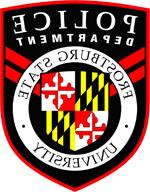Asbestos Program and Polychlorinated Biphenyls
The Asbestos Program and Polychlorinated Biphenyls section includes the following topics.
ASBESTOS SAFETY PROGRAM
Asbestos is a naturally occurring mineral. It has been incorporated in virtually hundreds of items such as floor and ceiling tile, automotive brake and clutch lining, steel beam fireproofing, pipe and tank insulation, gaskets, laboratory fume hood linings, electrical wiring insulation, drywall joint and spackling compounds, fire resistant insulation in fire doors and fire curtains in theaters. These items, commonly referred to as asbestos containing materials or ACM, are found in numerous facilities located on campus. A list of these facilities with known locations of asbestos containing materials is available for inspection at the Safety Office. Clinical, epidemiological, and laboratory studies have shown that exposure to airborne asbestos fibers may be detrimental to your health.
Therefore, in order to minimize employee exposure, the following University guidelines shall be strictly adhered to. The only exception is if the item(s) involved has been positively identified, by a certified/approved laboratory, as being non-ACM. The guidelines are:
- Do not disturb any pipe or tank covering through any activity which may cause damage to the protective outer covering.
- Do not scrape, drill, or hammer items into ceiling tile, floor tile, or transite lined laboratory bench top, cabinet, or fume hood.
- Do not insert hanging plant holders into ceiling tile or pipe insulation.
- Do not attach items to beams or columns that are covered with fireproofing material.
- Do not remove or go above any ceiling tile unless clearance has been provided through the Office of Human Resources Safety Office.
- Do not sand or abrasively abuse any floor tiles, transite lined laboratory bench top, cabinet, or fume hood.
- Do not sand, chip, drill or disturb any ceramic/plaster paris items, especially those constructed prior to 1980.
- Do not sand, cut, chisel, drill or otherwise disturb any pipe or tank gaskets.
- Only authorized trained Level II University personnel shall work with ACM. Proper personal protective equipment shall be utilized at all times while working with ACM. The rules and work procedures of the Maryland Asbestos Program will apply.
By adhering to these simple guidelines, the chance of exposure to airborne asbestos fibers can be greatly minimized.
Remember, if you are not absolutely positive the item is non-ACM, then do not disturb it. (Asbestos is dangerous when it is friable or disturbed so that fibers become airborne and are inhaled.) If in doubt, contact the Office of Human Resources Safety Office at x4897 so arrangements can be made for sampling and laboratory analysis.
POLYCHLORINATED BIPHENYLS
Polychlorinated biphenyls or PCB's are organic chemicals that were used in electrical equipment such as transformers and capacitors as a dielectric insulating material or cooling compound from the 1930's up until 1979 when the Environmental Protection Agency (EPA) issued the final PCB rule which prohibits the manufacturing, processing or distribution of PCB's.
Presently, all of the transformers and large capacitors that were known to be containing PCB's on the FSU campus have been removed from service and properly disposed of. The only items remaining on campus that could possibly still contain PCB's are the fluorescent light ballasts that were manufactured prior to 1979. Individual ballasts contain such a small amount of PCB that their disposal is exempt from regulation. The vast majority of PCB containing ballasts were removed in an energy conservation program that concluded in 1995. The only known exceptions are in high locations in Fine Arts and the Lane Center that could not be reached during the energy management project. Those locations were scheduled to be changed out in the fall of 1995. The Office of Human Resources Safety Office and the Facilities Director are responsible for the management of the PCB Program at FSU. If you have an incident involving fluorescent light ballasts that were manufactured prior to 1979 and which contain a cooling liquid, there is a chance that it could contain PCBs. You should do the following:
- Contact the Office of Human Resources Safety Office at x4897 during standard work hours and the FSU University Police at x4222 during non-work hours.
- Avoid contact with any potential PCB containing fluids. If you think you came into contact with PCB containing materials, wash the exposed area thoroughly with soap and water. Stay away from the area and keep any other employee from going to this location.
In case of an electrical fire involving a device that is suspected of containing PCB's, you should do the following:
- Follow normal fire procedures. Evacuate the area, close the door and report the fire to University Police at x4222. Inform them that the fire possibly involves PCB containing materials.
- Be prepared to provide the Frostburg Fire Department with any information they might need regarding the incident.
Fluorescent light ballasts sometimes overheat or "burnout" and may release an odor or liquid. This situation should be distinguished from an electrical fire. The proper response to an overheated ballast is to turn off the light, ventilate the room, and clean up any spilled fluid with the proper protective equipment.

